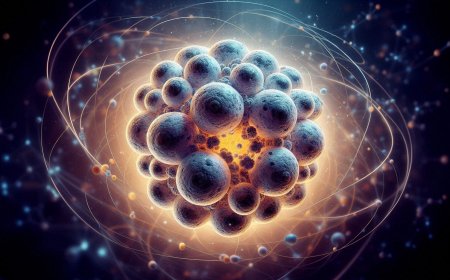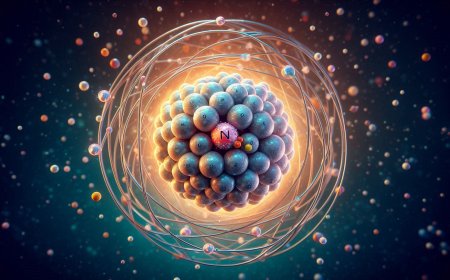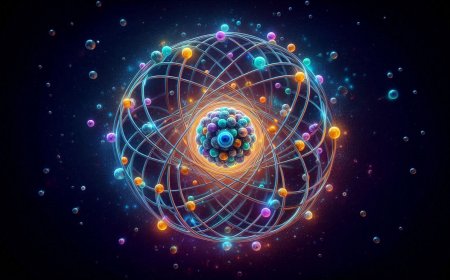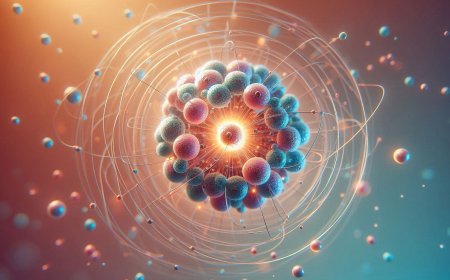Atomic Number: The Key to Understanding Elements
Learn the importance of atomic number in chemistry, its role in element identification, periodic table arrangement, and chemical properties. Discover how atomic number impacts electron configuration, isotopes, and nuclear reactions.

In the world of chemistry, every atom holds a unique place in the universe, distinguished by a single defining property: its atomic number. Represented by the symbol ZZZ, the atomic number is a fundamental characteristic that not only identifies each element but also dictates many of its physical and chemical properties. But what exactly is the atomic number, and why is it so important?
What is Atomic Number?
The atomic number of an element is the number of protons in the nucleus of an atom. Protons are positively charged particles that, along with neutrons, make up the nucleus, the dense central core of the atom. Electrons, which carry a negative charge, orbit around the nucleus. Since an atom is electrically neutral, the number of electrons is always equal to the number of protons. Therefore, the atomic number also indirectly represents the number of electrons, which are responsible for an element’s chemical behavior.
For example, hydrogen has an atomic number of 1, meaning it has one proton in its nucleus. Oxygen, with an atomic number of 8, has eight protons. This straightforward counting of protons helps scientists classify and arrange elements systematically in the periodic table.
Why is the Atomic Number So Important?
The atomic number defines an element's identity. Even if atoms have the same number of neutrons or similar physical characteristics, they belong to entirely different elements if their atomic numbers differ. For instance, carbon has an atomic number of 6, whereas nitrogen has an atomic number of 7. Despite being neighbors on the periodic table, these two elements have entirely different roles in chemical reactions due to their differing atomic numbers.
Additionally, the atomic number influences the element’s chemical properties by determining the arrangement of electrons in an atom. Electrons occupy specific regions called “electron shells” or “energy levels” around the nucleus, with each shell capable of holding a certain number of electrons. The configuration of these electrons influences how atoms interact, bond, and form compounds.
Atomic Number and the Periodic Table
The periodic table, one of the most powerful tools in science, organizes elements based on their atomic numbers. Dmitri Mendeleev originally developed the periodic table by arranging elements by atomic weight, but later, scientists realized that atomic number was a more reliable organizing factor. Today, elements in the periodic table are arranged in ascending order of atomic numbers, from hydrogen (1) to oganesson (118). This arrangement not only helps predict an element’s properties but also enables chemists to infer how elements will react with each other.
Each element falls into a specific group and period in the periodic table, indicating its chemical reactivity, state at room temperature, and bonding behavior. For instance, elements with atomic numbers in the range of 1–2 (hydrogen and helium) are unique gases, while atomic numbers 3–10 represent reactive metals and nonmetals in the same row of the table. Trends such as increasing electronegativity, atomic radius, and ionization energy emerge because of the way atomic number correlates with electronic structure.
The Atomic Number’s Role in Modern Chemistry
Advancements in modern chemistry, including nuclear physics and quantum mechanics, have underscored the importance of the atomic number. In nuclear reactions, such as fusion and fission, atomic number changes when an element transforms into a new one. For example, when uranium-238 undergoes radioactive decay, it loses protons and transforms into thorium, altering its atomic number and, consequently, its place on the periodic table.
The atomic number also plays a significant role in identifying isotopes—atoms of the same element with varying numbers of neutrons. Although isotopes of an element have different atomic masses, their atomic number remains constant, as it’s the number of protons that dictates the element's identity.
Conclusion: A Fundamental Concept with Far-Reaching Implications
The atomic number is not just a number; it is the core of an element’s identity and the foundation of the periodic table. Its role in determining the arrangement of electrons and defining chemical properties makes it crucial in understanding everything from chemical reactions to nuclear transformations. Whether you're studying simple compounds in the classroom or exploring complex nuclear reactions in a lab, the atomic number serves as a guiding principle, unlocking the mysteries of chemistry and the world around us.
By appreciating the atomic number, we deepen our understanding of the universe at the atomic level, where the invisible forces of nature converge to create the vast diversity of matter.
What's Your Reaction?



























